Quilts and the New Year
By Marian Ann J. Montgomery, Ph.D.
Curator of Clothing and Textiles, Museum of Texas Tech University
As we think about the New year, visions of spring colors come to mind along with the reds of upcoming Valentine’s Day. But first we have to get through those cold days for which quilts were specifically designed. Many women made quilts as a necessity, not for beauty—just to keep their family warm. The three quilts I show you here from the Museum’s Collection were made probably by women who just needed to get them done to warm their children. However looking at the quilts today through the prism of modern art, we can see that even with scraps these women created beautiful works of art.
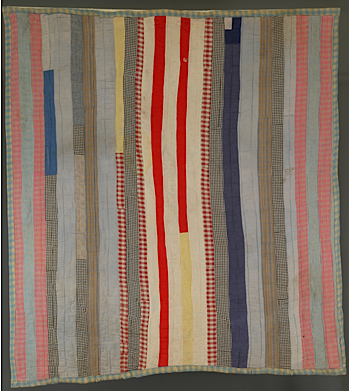
This Vertical Strip Pieced Quilt could have been made from what we call jellyrolls today, but it predates that development. The arrangement of the pieces creates a beautiful abstract image. The creator is unknown, but the quilt dates from circa 1920 and was a gift of Mrs. O. V. Adams.
Vertical Strip Pieced Quilt, circa 1920. Maker unknown. Gift of Mrs. O. V. Adams TTU-H1978-203-232.
(Photo courtesy of the Museum of Texas Tech University)

Alma Ocker Eggemeyer (b. Oct 11, 1902, d. Sept 24, 1875, Mrs. Walter J.) made this Pieced Squares Quilt in 1933 in Rowena, Texas. The quilt is typical of scrap quilts made during the Depression to keep the family warm.
Gift of Mrs. Geneva Eggemeyer Tetley, TTU-H1987-108-014.
(Photo courtesy of the Museum of Texas Tech University)

Quilt maker Ethel Abernathy (B. 1887, M. 1907, D. 1981, Mrs. Robert)
(Photo courtesy Judith Abernathy)
A few years ago Judith Abernathy offered several quilts made by her Grandmother, Ethel Abernathy (Mrs. Robert b. Oct 3, 1887, m Dec. 1, 1907, d Sept. 11, 1981), in Floydada, Texas for the Museum’s Collection. I selected three, although it was difficult to let some of the others go. As I thought about the three new quilts over the days after they came into the Museum I realized that they represented the changing economic situation of the quilt maker, her family and the money she was able to spend on her quilt making.

The String Pieced quilt above from about 1920, is the earliest of the pieces by Mrs. Abernathy in the Museum's Collection. It is a cheerful quilt showing her developed color sense, but is entirely made from scraps with many of the fabrics being loosely woven, meaning that they were probably inexpensive at the time.
According to the 1900 Census, the Bell and Abernathy farms were next to each other in Spring Creek, Cherokee, AL. While 15 year old Robert was working on his father's farm, 12 year old Ethel attended school. Ethel and Robert married Dec. 1, 1907, and by 1920 the they owned and lived on a farm adjacent to the farm owned Robert's brother. Did Ethel and Robert they purchase her father's farm? We are not sure, but may surmise that this was the case.
At the time Ethel made this quilt she was a young married mother, having had at least three of her five children. Ethel and her husband Robert farmed until he became a carpenter. In 1927 they moved their family from Alabama to Floydada, Texas.
The migration of families from the south to Texas was not an uncommon occurrence in the late 1800s and early 1900s. The lack of jobs, farm mechanization, lack of crop rotation and destruction of cotton plants (a major cash crop) by the bowl weevil infestation beginning in 1892 which swept across the lower states including Alabama, may have resulted in Ethel's husband transitioning from farming to carpentry.
Gift of Judith Abernathy, TTU-H2015-082-001
(Photo courtesy of the Museum of Texas Tech University)

Grandmother's Fan Quilt is made of printed feed sack fabrics circa 1939. Normally the use of printed cotton feed sacks would be an example of continued economic difficulties for the family or just plain frugal housewifery, but the fact that she purchased the background fabric and took the time to do such a fancy border are clear indications that Mrs. Abernathy’s economic circumstances had improved. She had the time to do fancy work and she could afford fabric especially purchased for her quilt.
Grandmother’s Fan Quilt by Ethel Abernathy, circa 1939. Gift of Judith Abernathy, TTU-H2015-082-002
(Photo courtesy Museum of Texas Tech University)

The third quilt is the showstopper. It is a Poppy Quilt made from a kit. We know it was made from a kit because the blue quilting lines survive on the fabric. By the time she made this quilt in the 1940s the family’s economic condition was so good that Mrs. Abernathy could buy a kit, that included all the fabrics, embroidery floss and background fabric. She was no longer trying to get quilts made as quickly as she could to keep her family warm but had the time to make something really beautiful.

Her children were largely grown and Robert and Ethel had moved into the larger town of Lubbock, Texas. The family remembers her as a great cook who made delicious fried pies, usually peach. She also kept a beautiful garden of flowers and vegetables.
Isn’t it interesting how the quilts a woman left behind can tell us so much about her life?
Poppy Kit Quilt by Melinda Ethel Bell Abernathy, circa 1940.Gift of Judith Abernathy, TTU-H2015-082-003
(Photo courtesy Museum of Texas Tech University)
Marian Ann J. Montgomery, Ph.D.
Curator of Clothing and Textiles, Museum of Texas Tech University
~~~~~~~~~~~~~~~~~~~~~~~~~~~~~~~
While learning about Ethel and her story, we followed a path that led us to rediscover a number of stunning quilts. As quilters today, we generally don't have the need to make a quilt to just stay warm. However, what have you been doing with all of those orphan blocks or unfinished projects? Bet they are still stashed away in the 'to be used at some point' pile. Well? What are you waiting for? How about getting those items out of the darkness, slapping them up on a design wall, to see what could develop? Need some inspiration? How about Shoo Flies, Toads & T's by Paul D. Pilgrim? Isn't this a stunning piece. It made from antique blocks dating from 1870-1880, old fabric and new fabric.
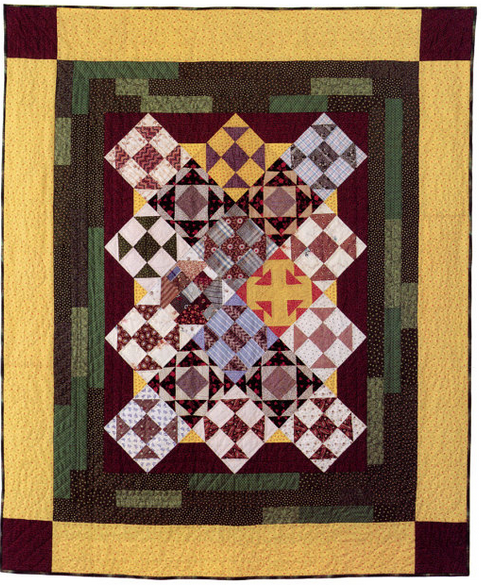
Shoo Flies, Toads & T's by Paul D. Pilgrim
(Image via Etsy)
Paul D. Pilgrim and Gerald E. Roy began collection quilts in 1969 as they viewed them as beautiful and portable works of art. Over the years of collecting, Paul found it difficult to pass by and leave orphan blocks that, for whatever reason, never made it into a finished quilt. So, Paul began purchasing these little gems, which at a later date, he began placing together to create new abstract works. This blending of unused, unloved and forgotten orphans, were reborn to be loved and very much admired. These three quilts are examples Paul D. Pilgrim's handiwork.
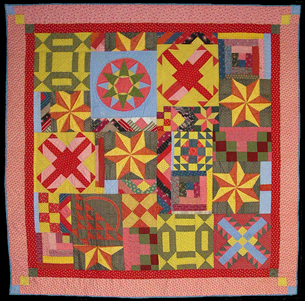
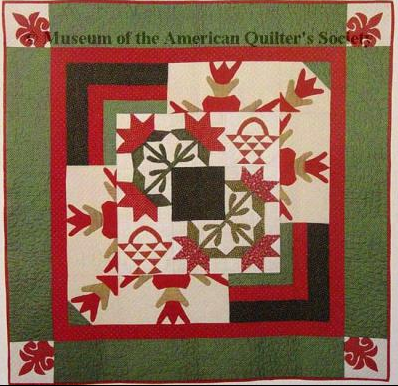


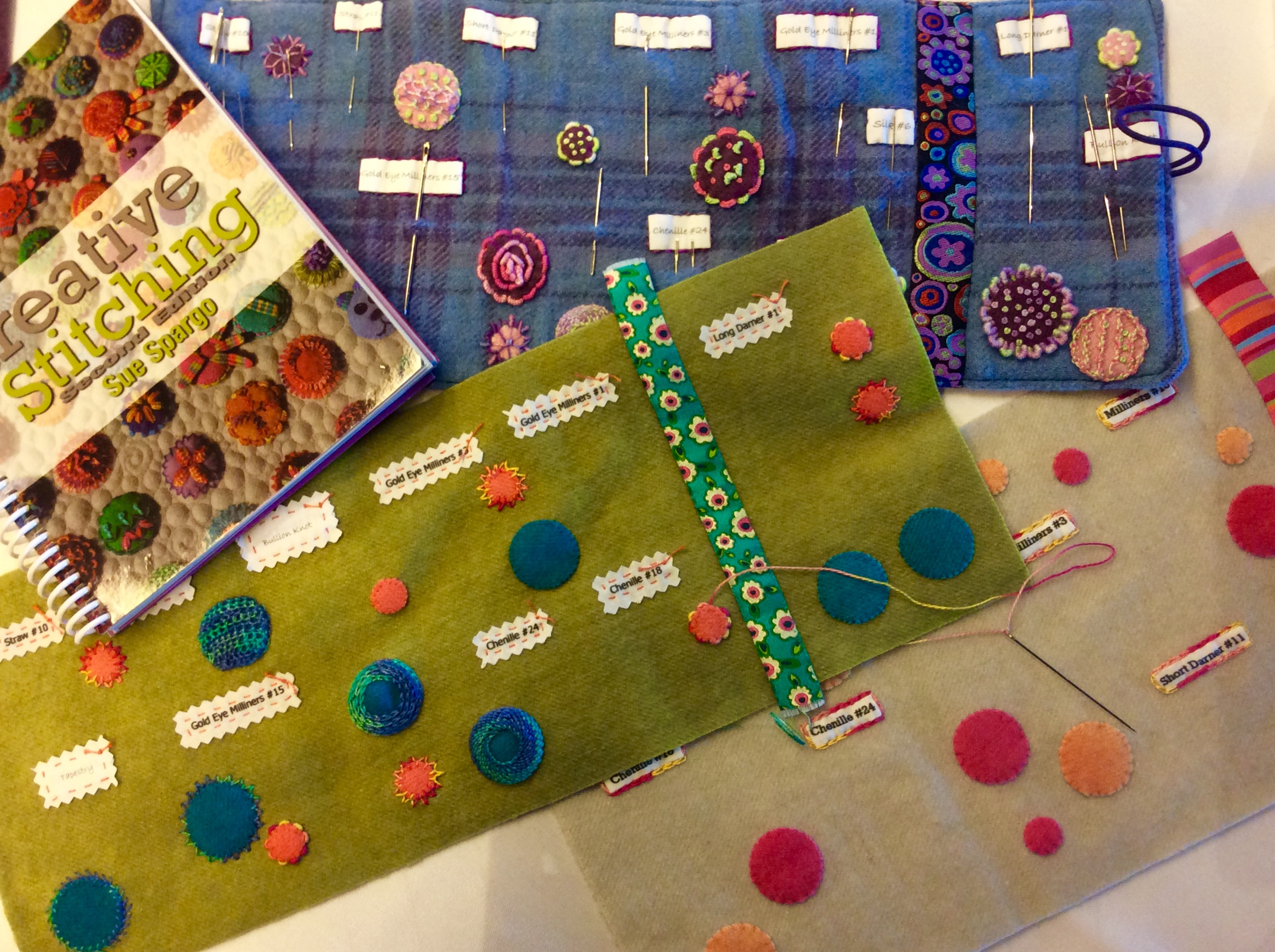
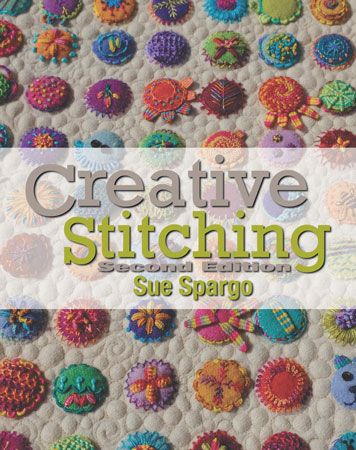
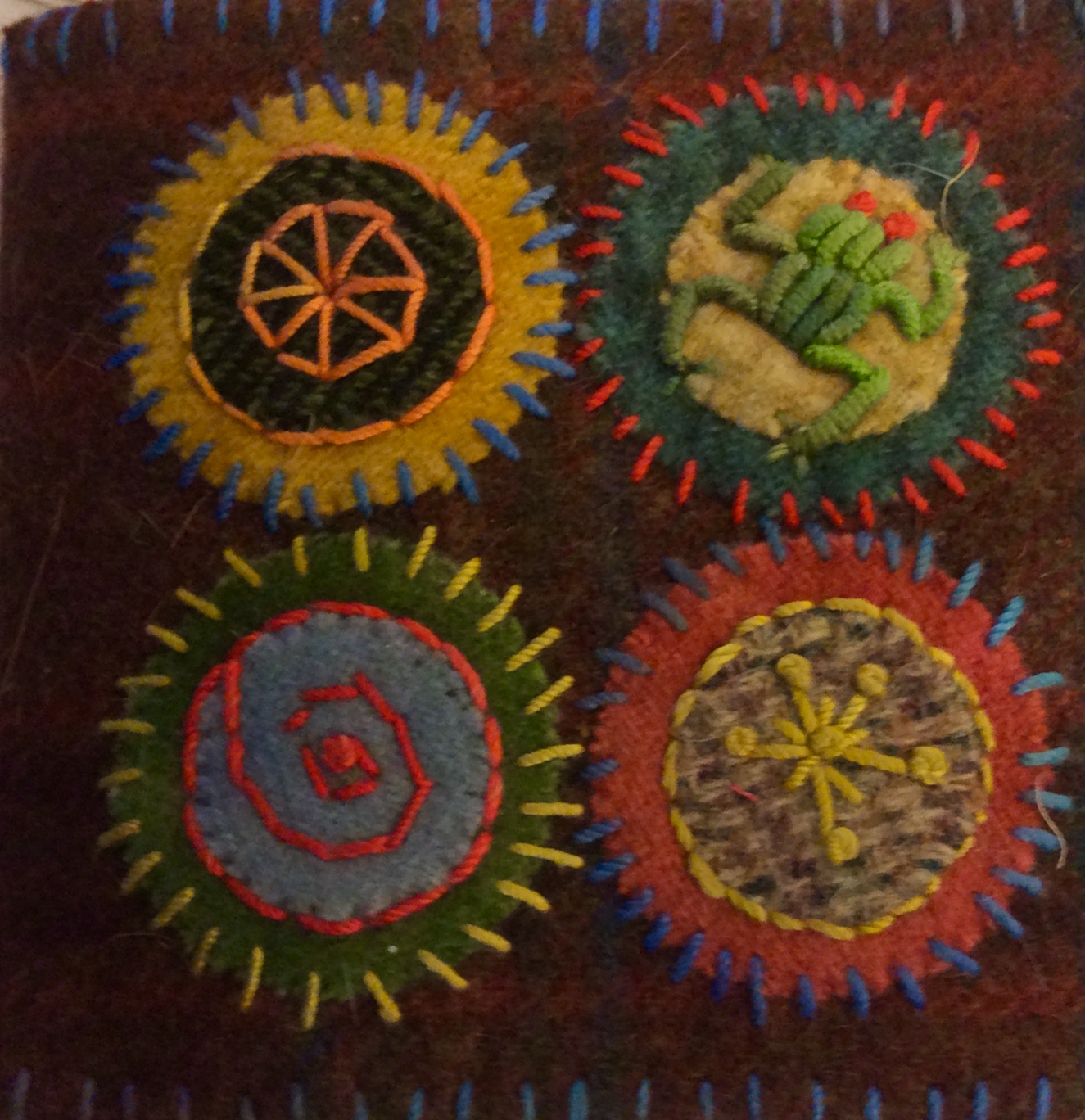
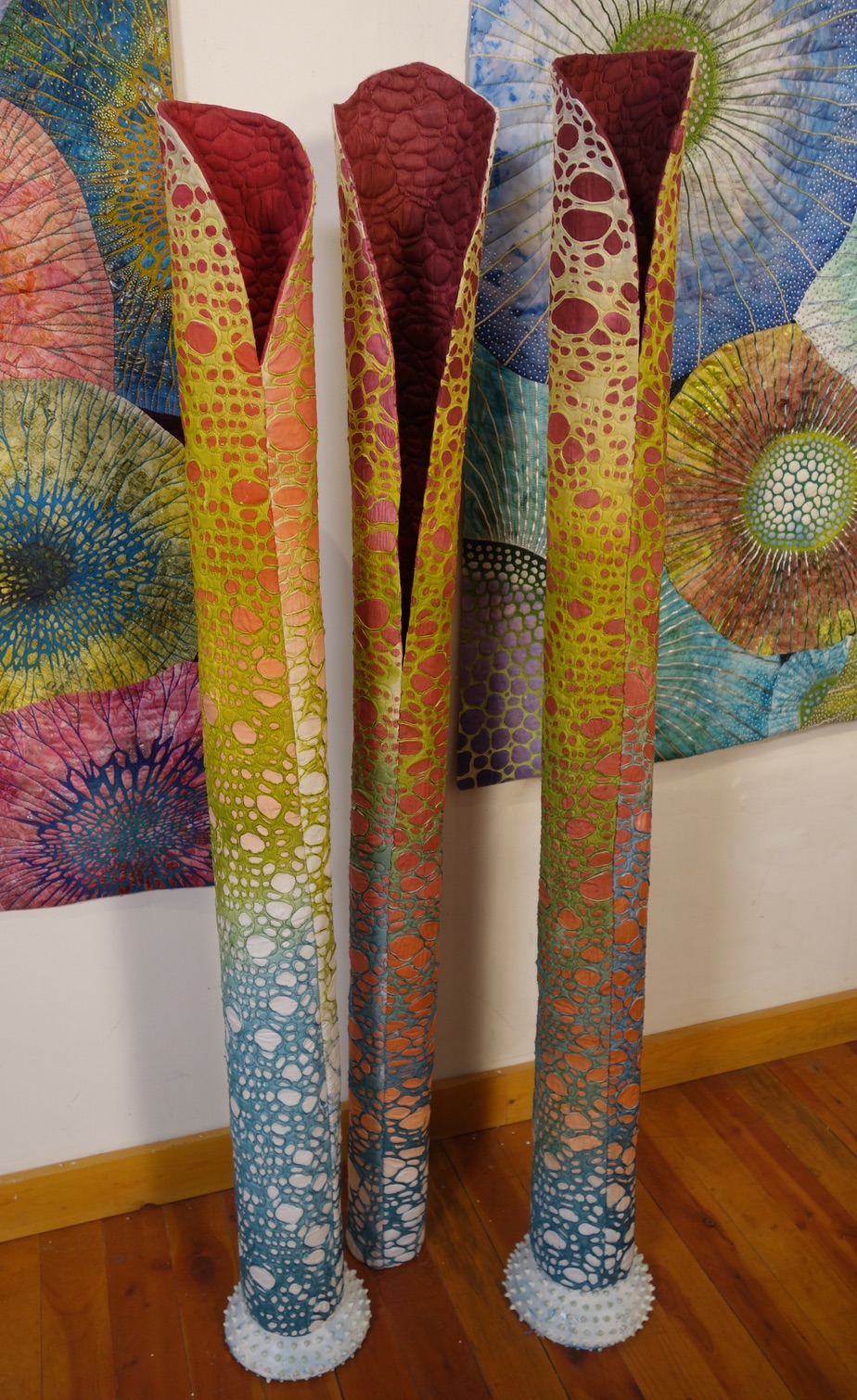
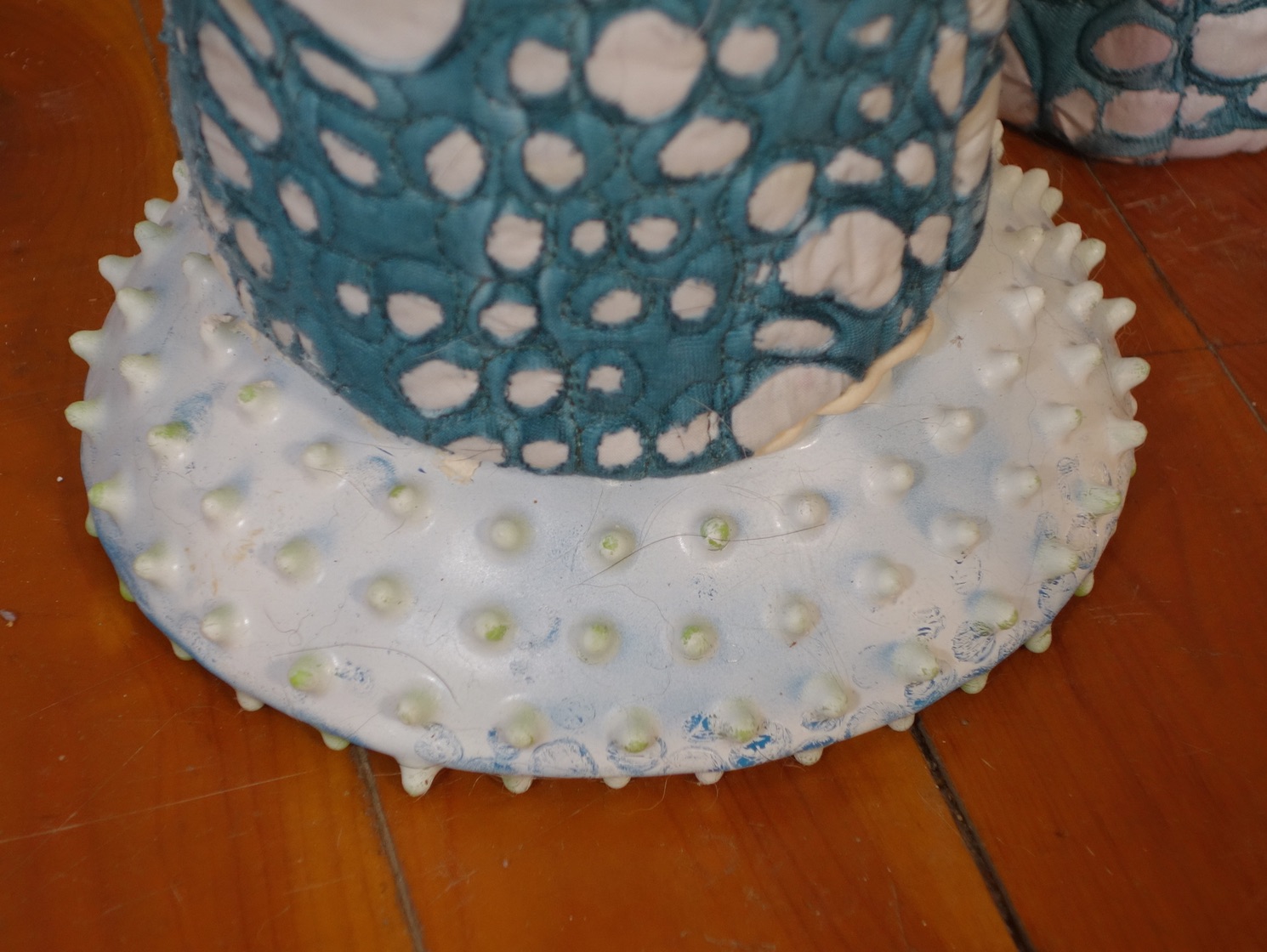


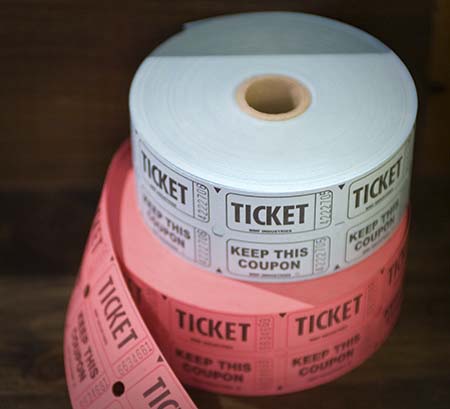

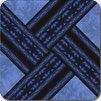
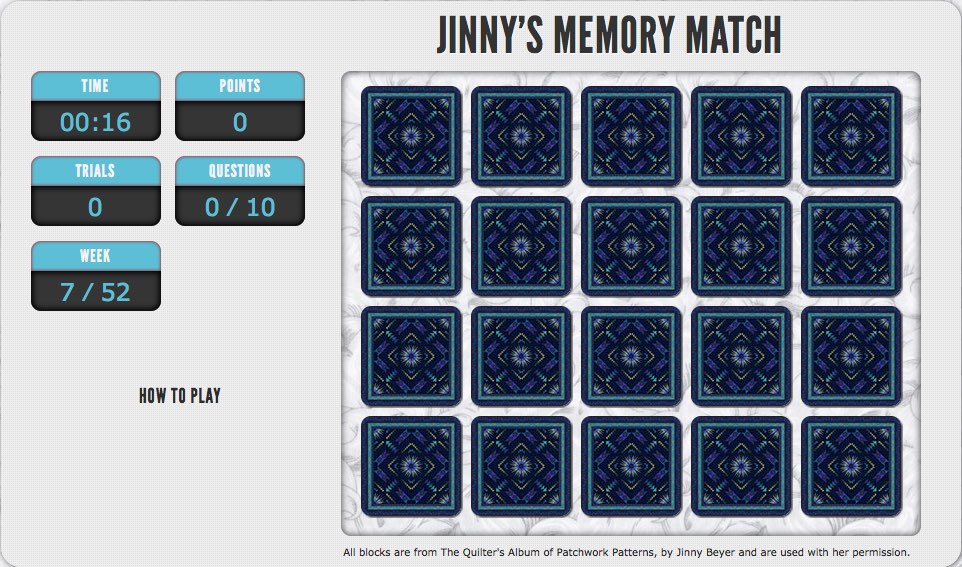
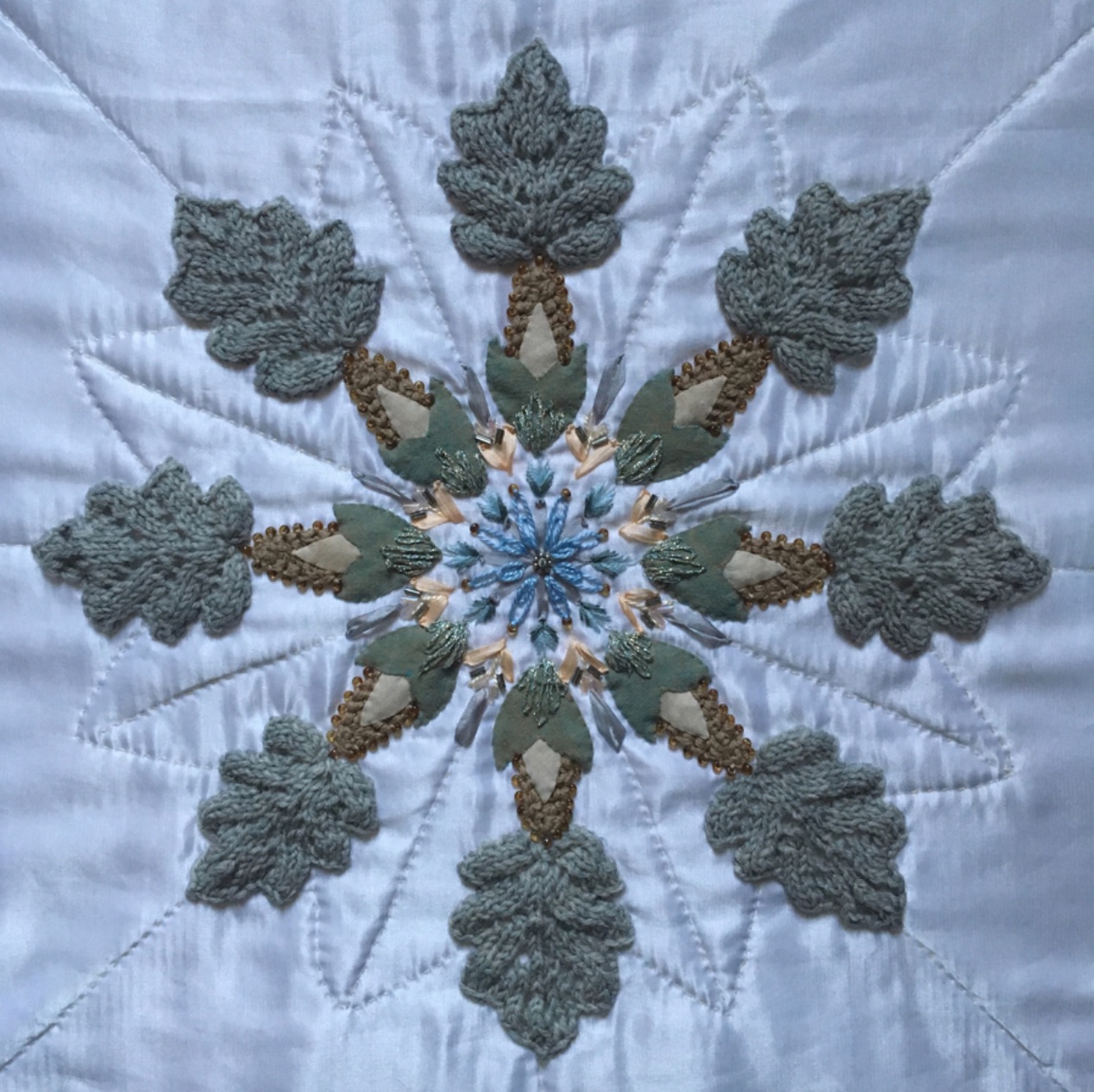
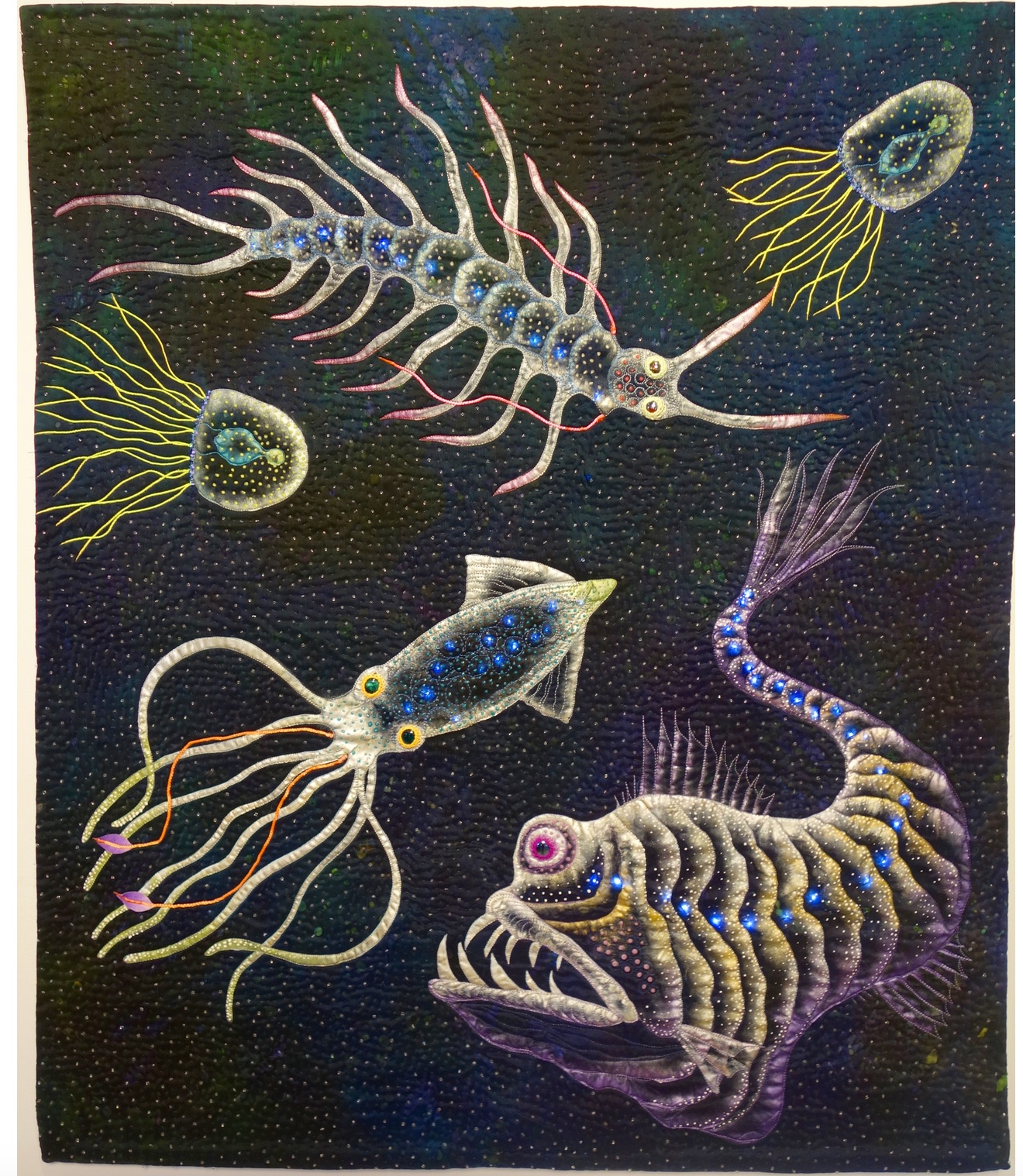

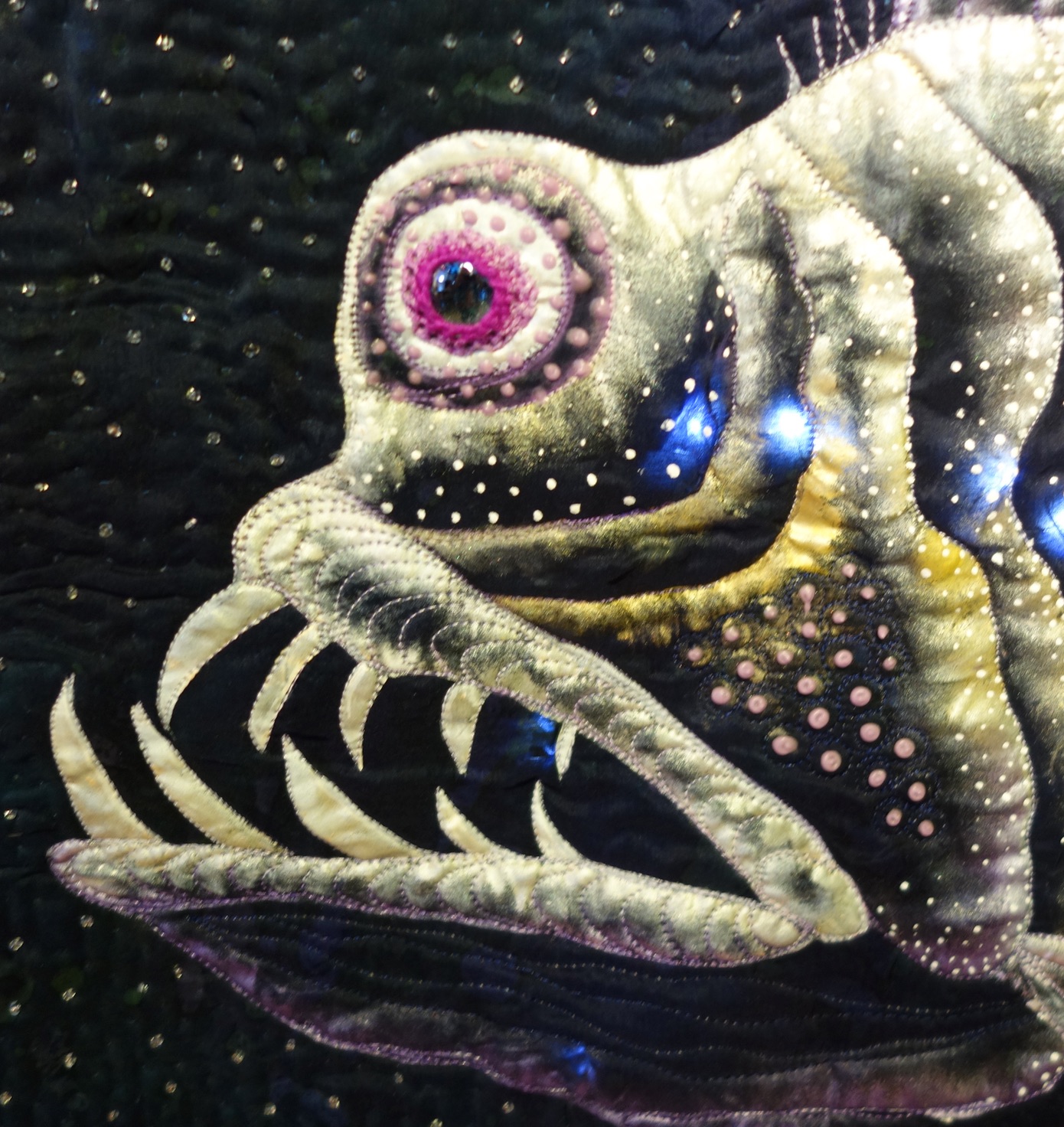


.jpg)


